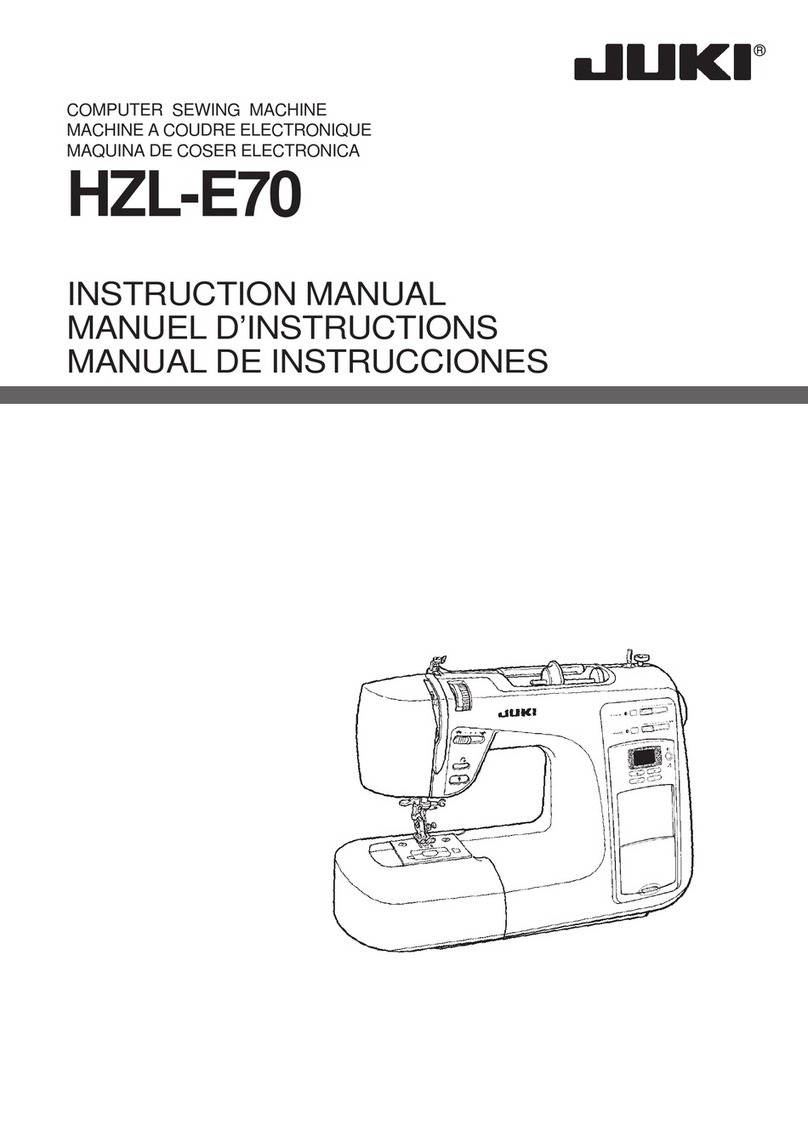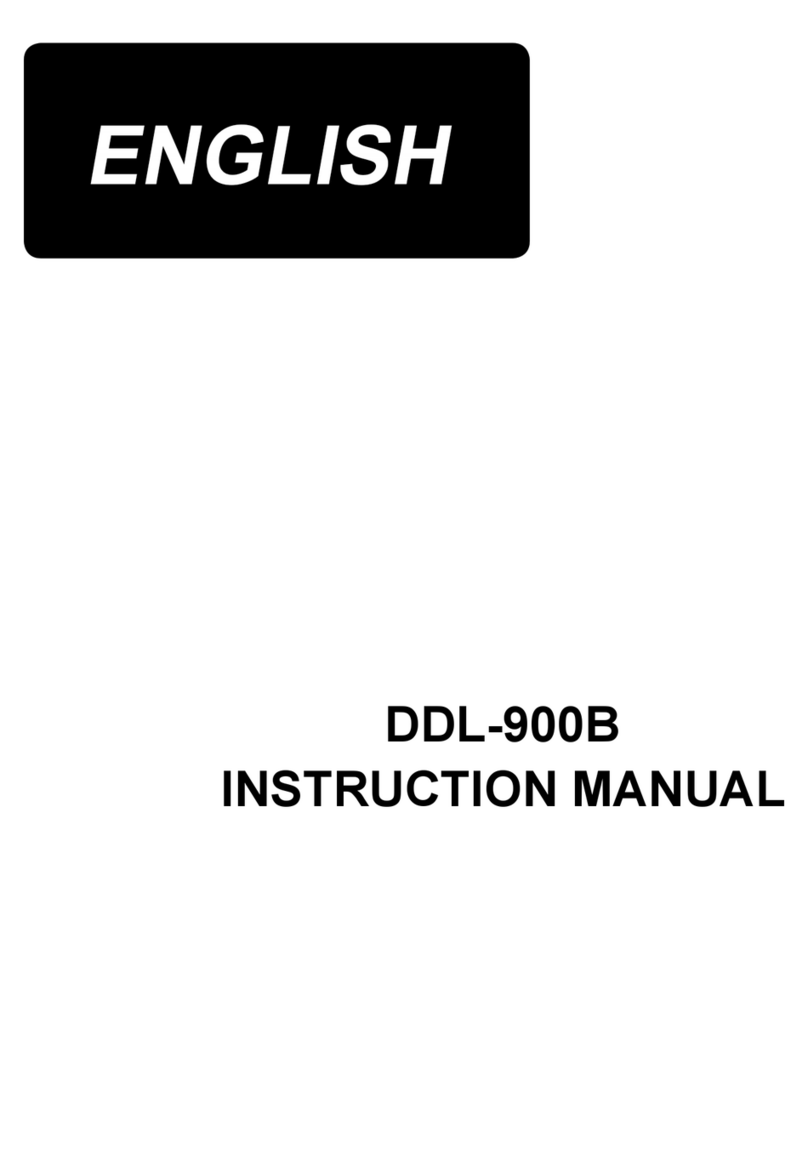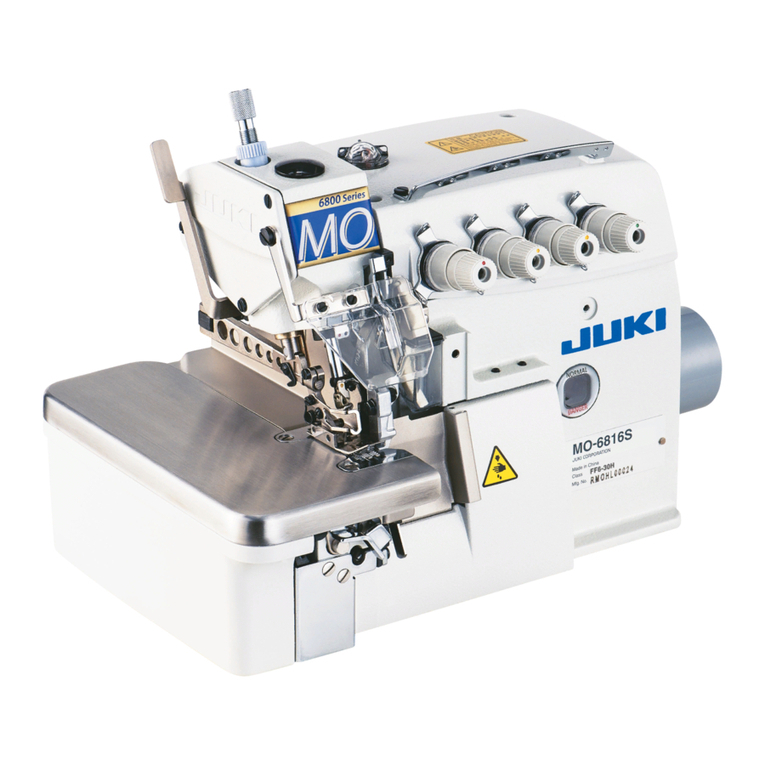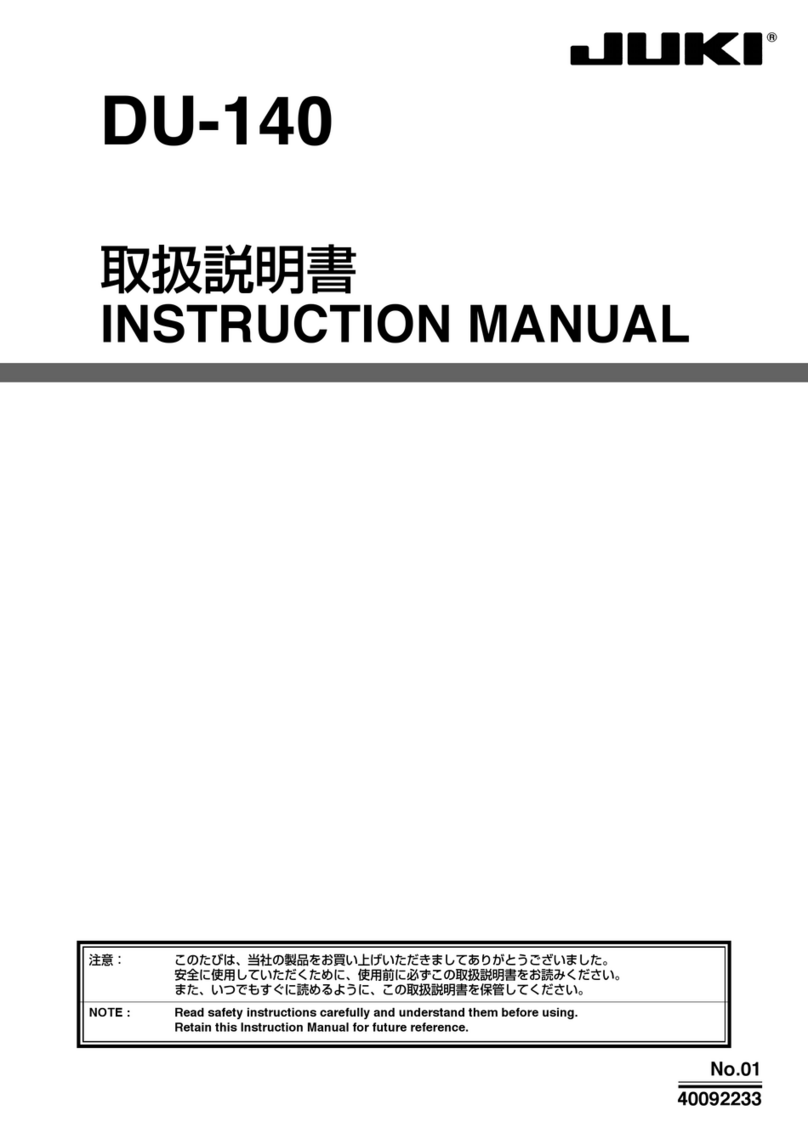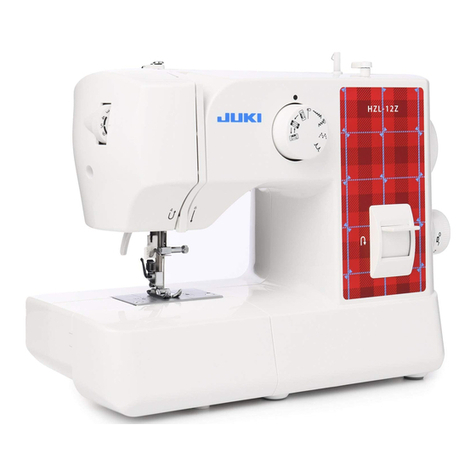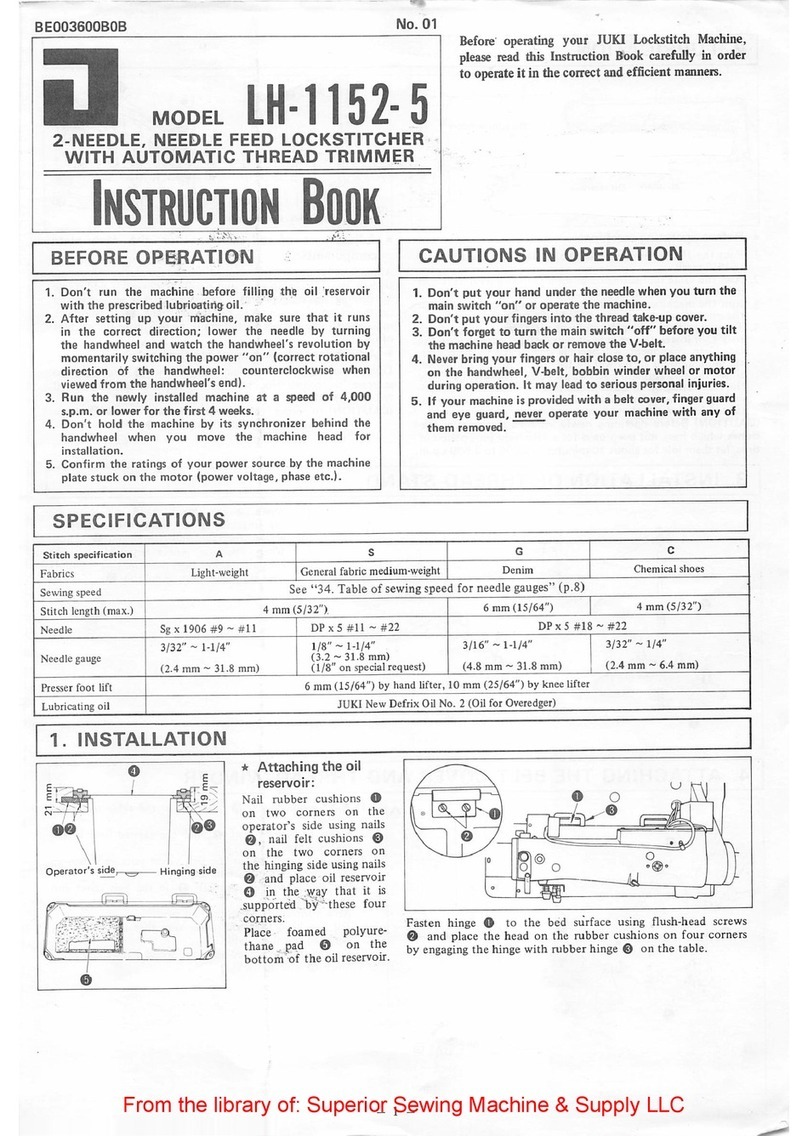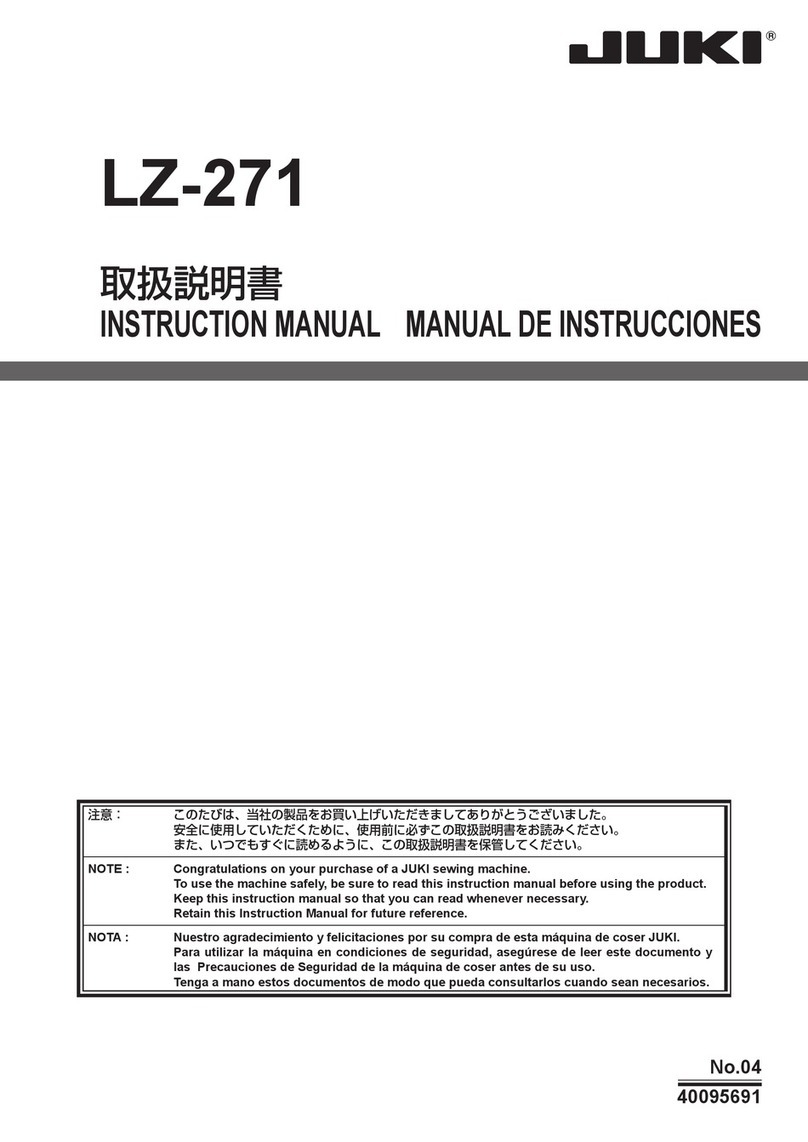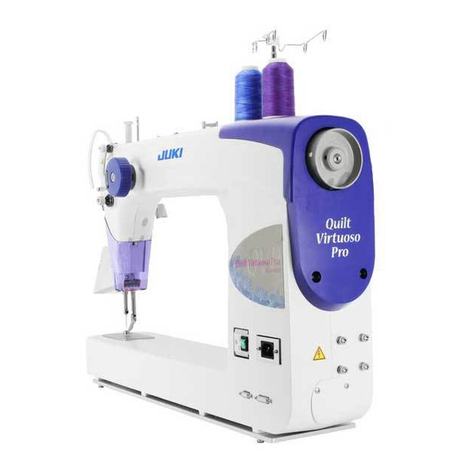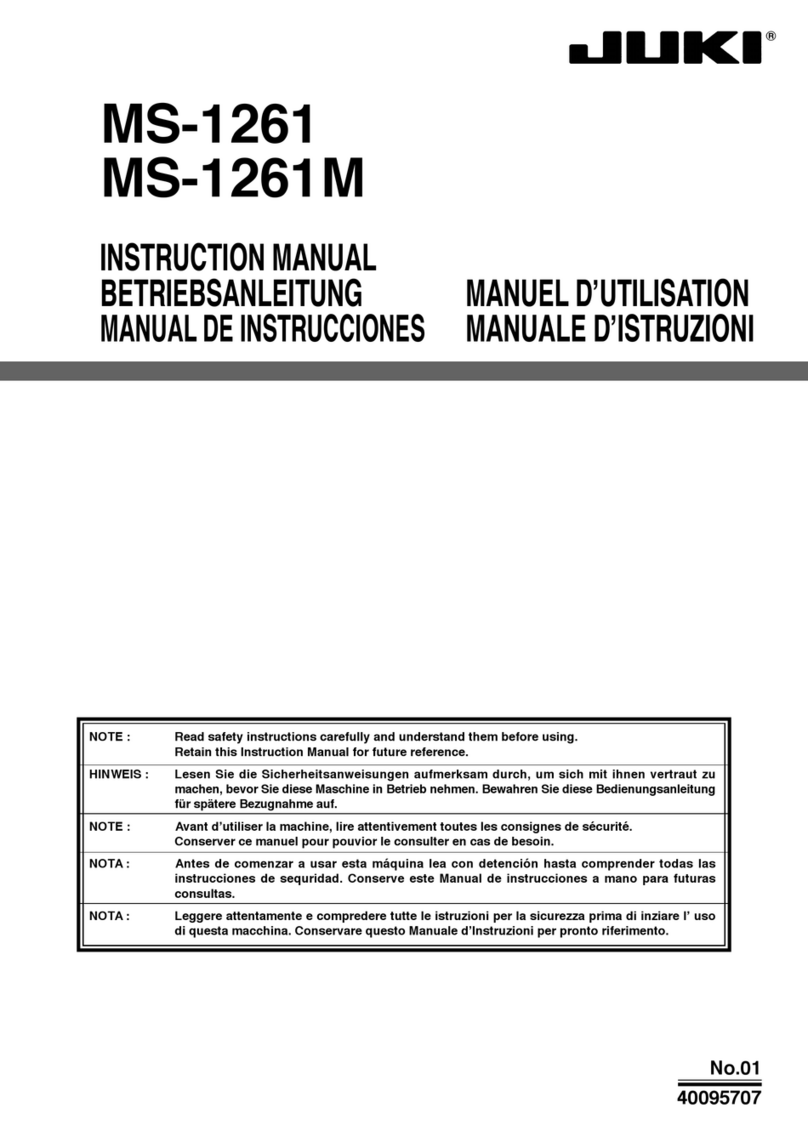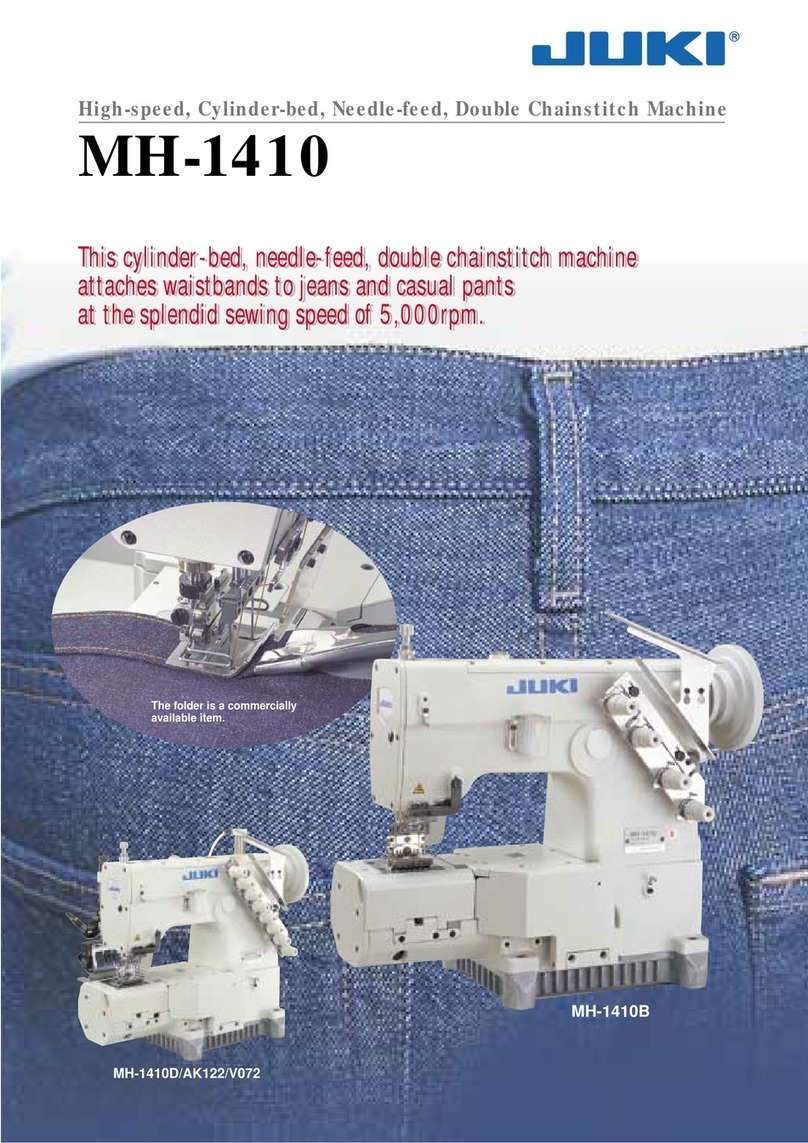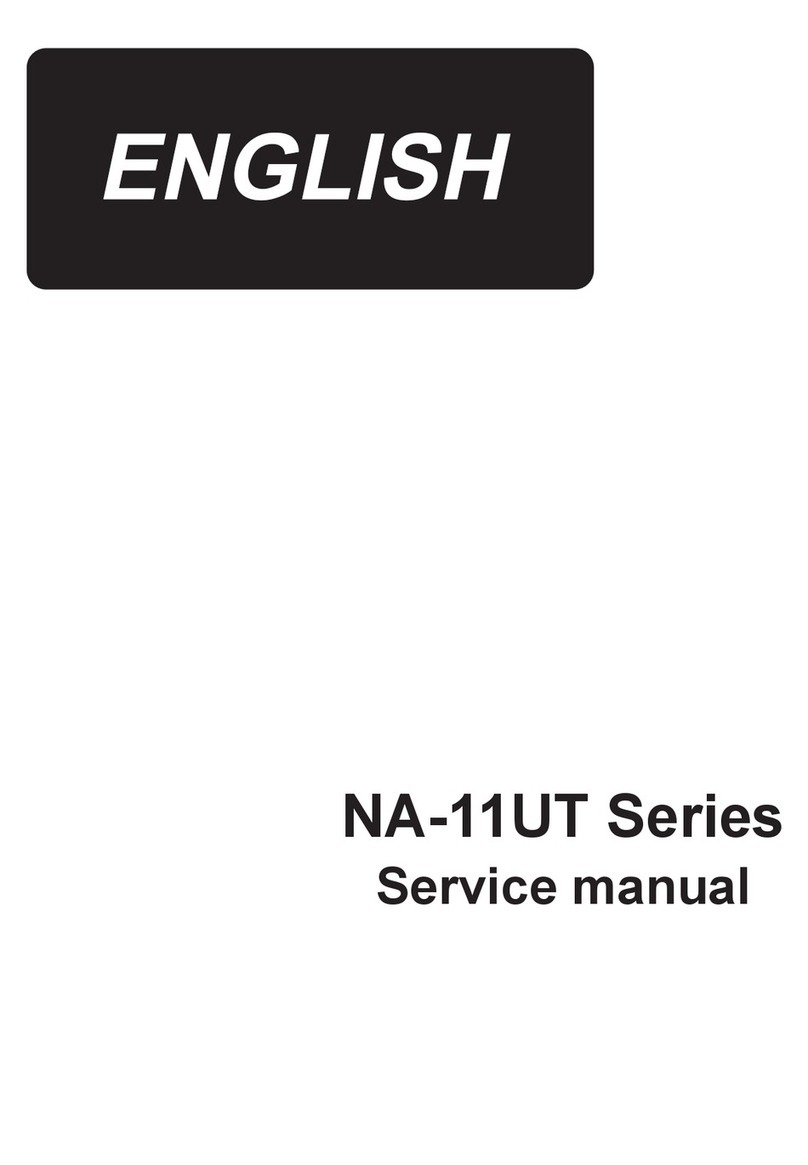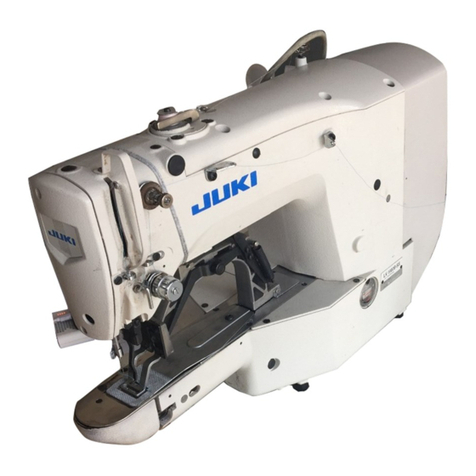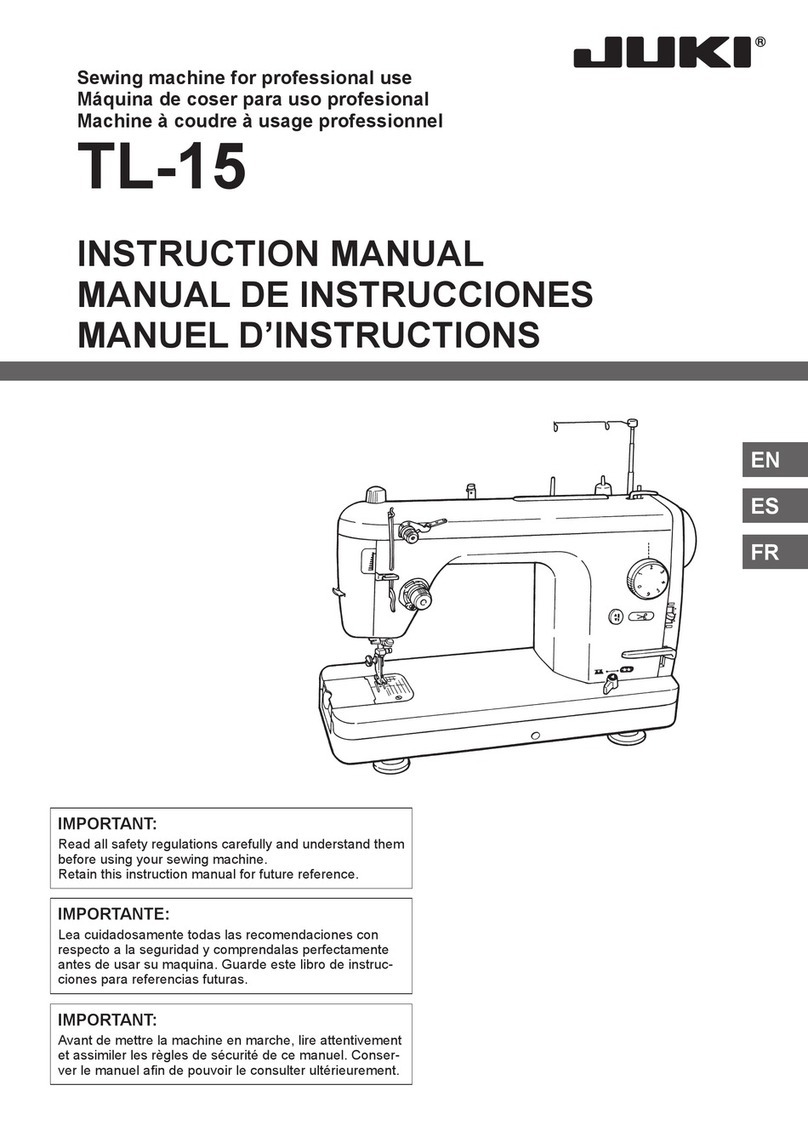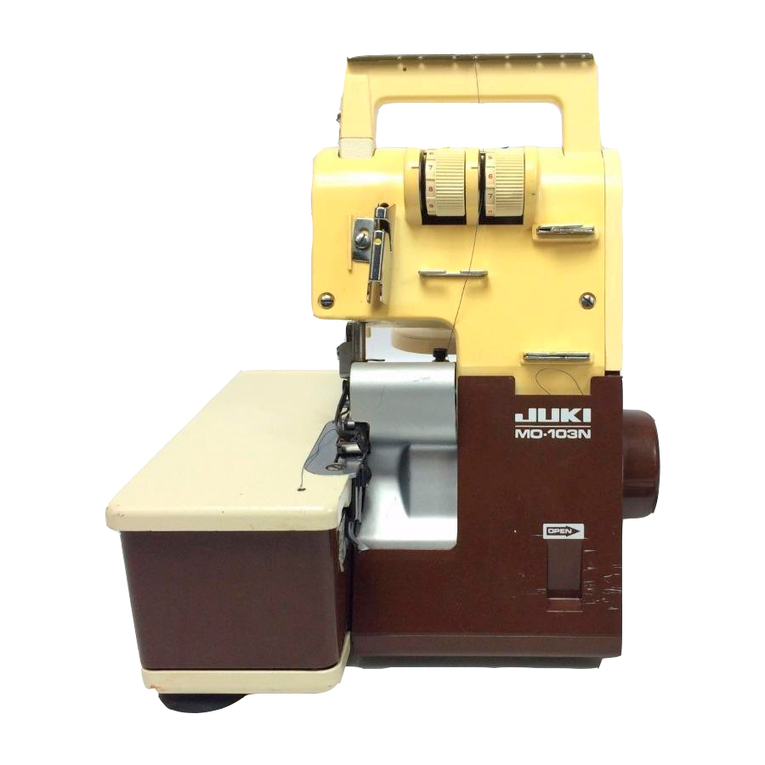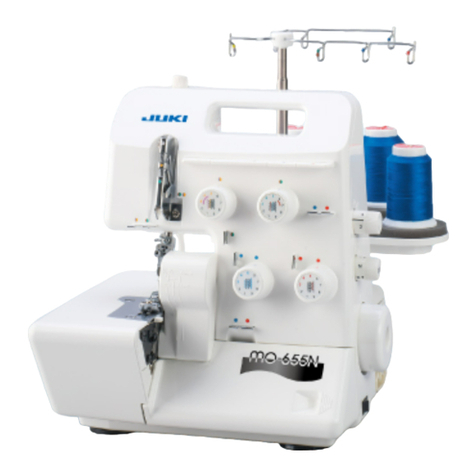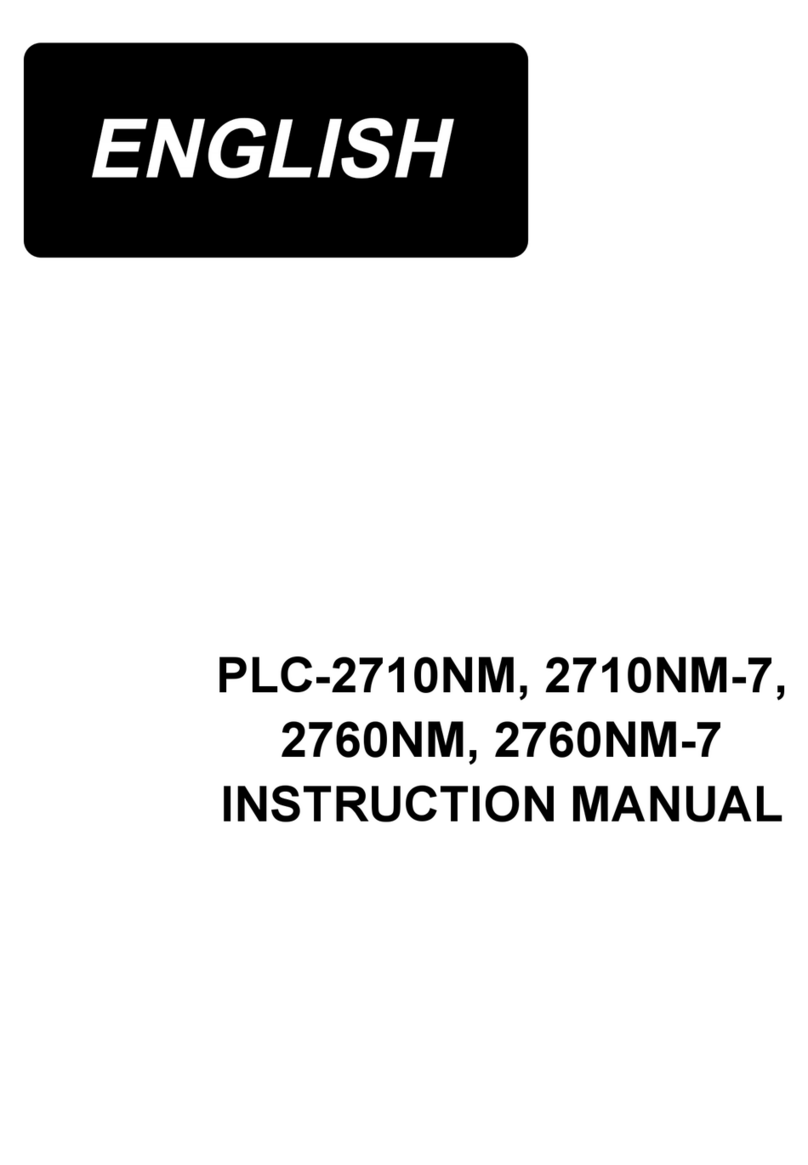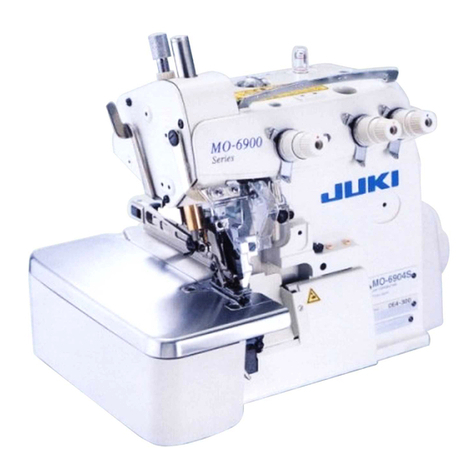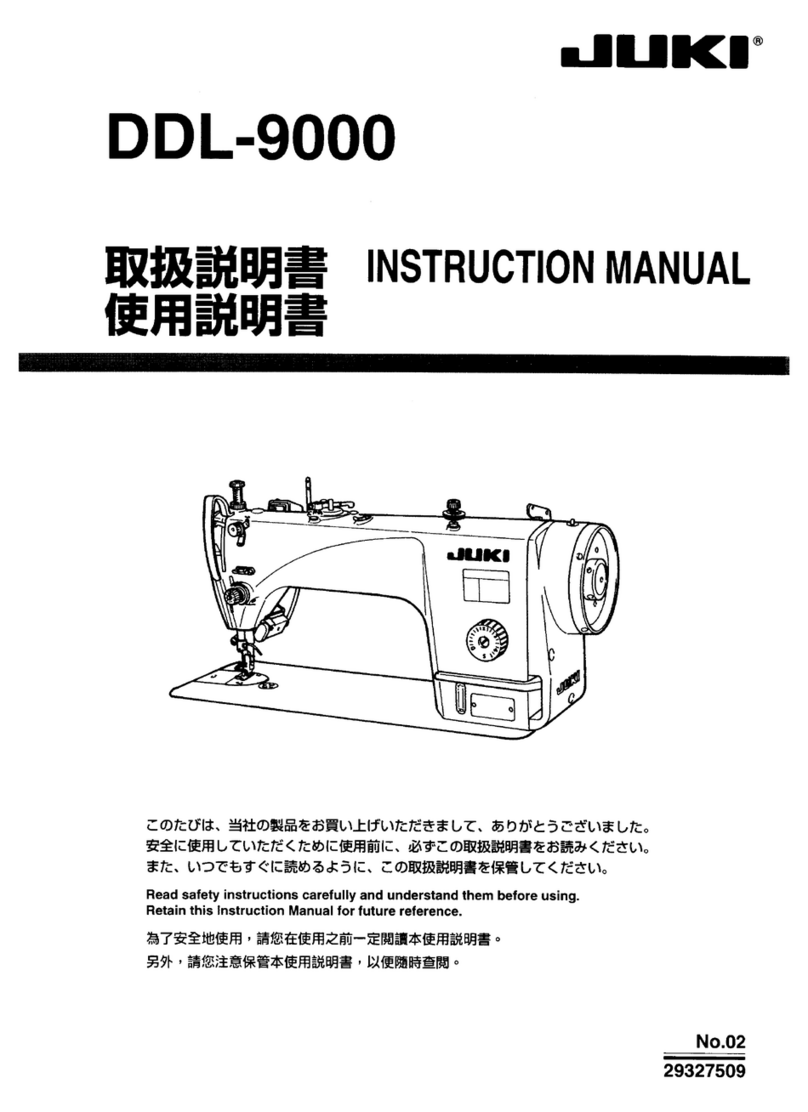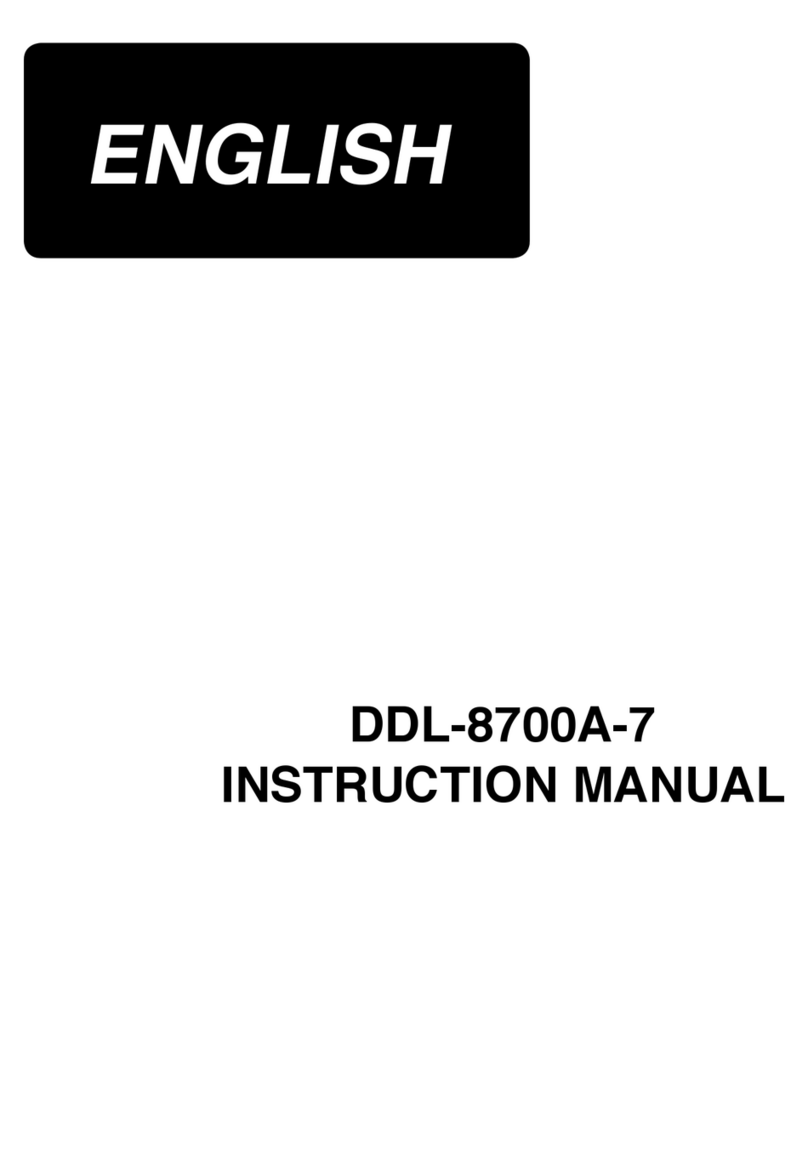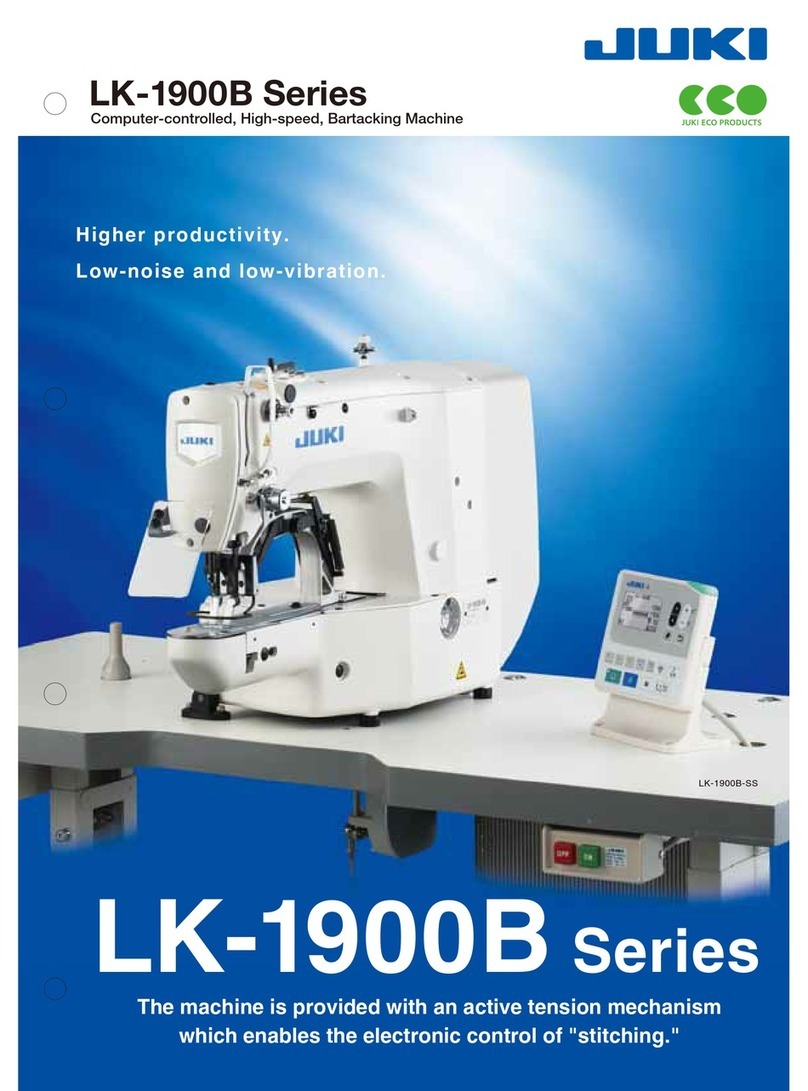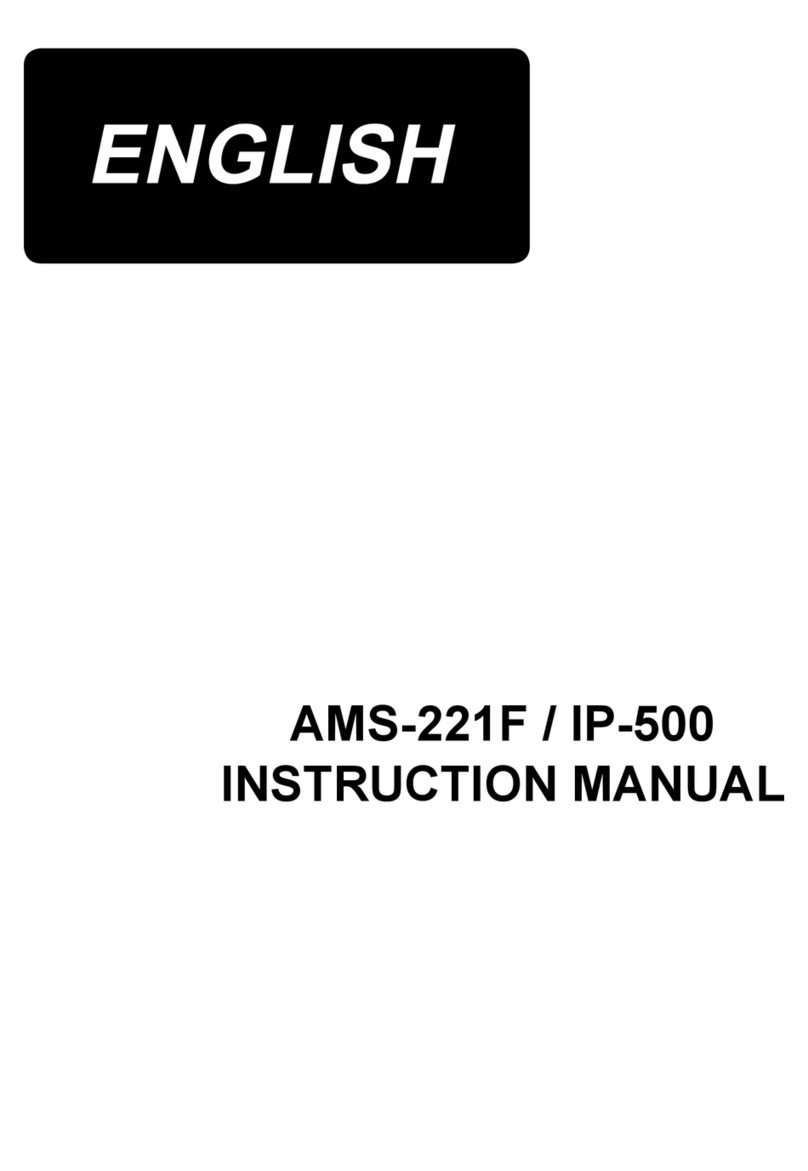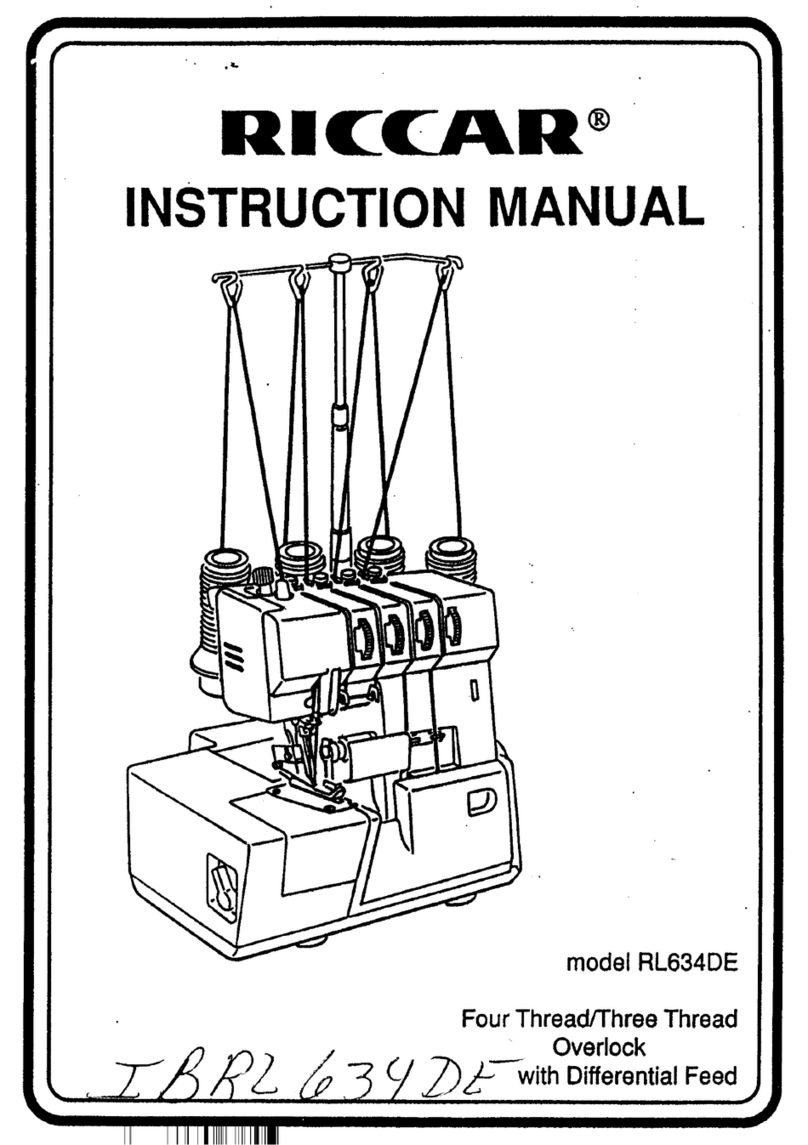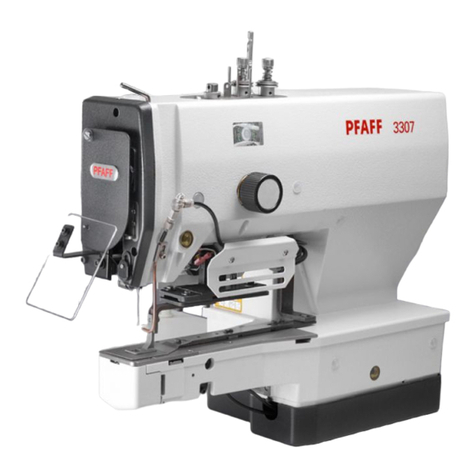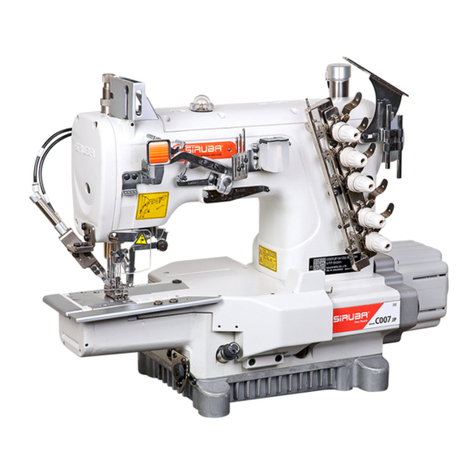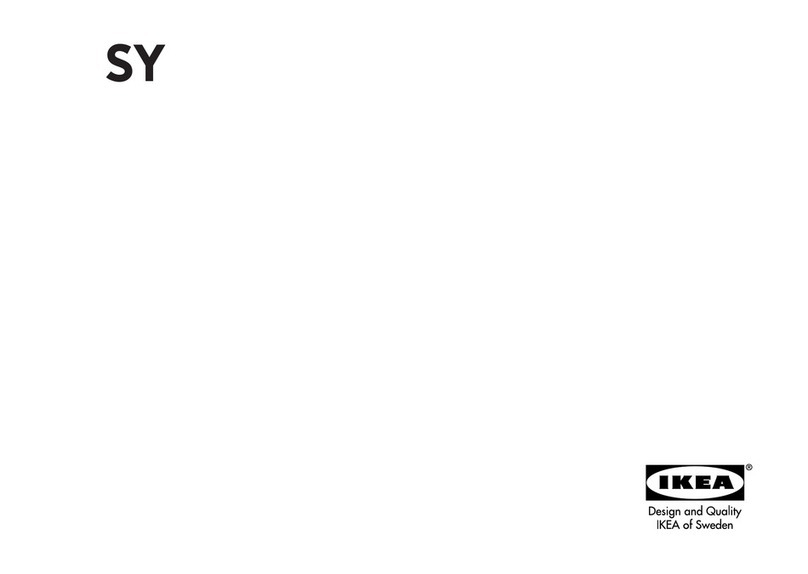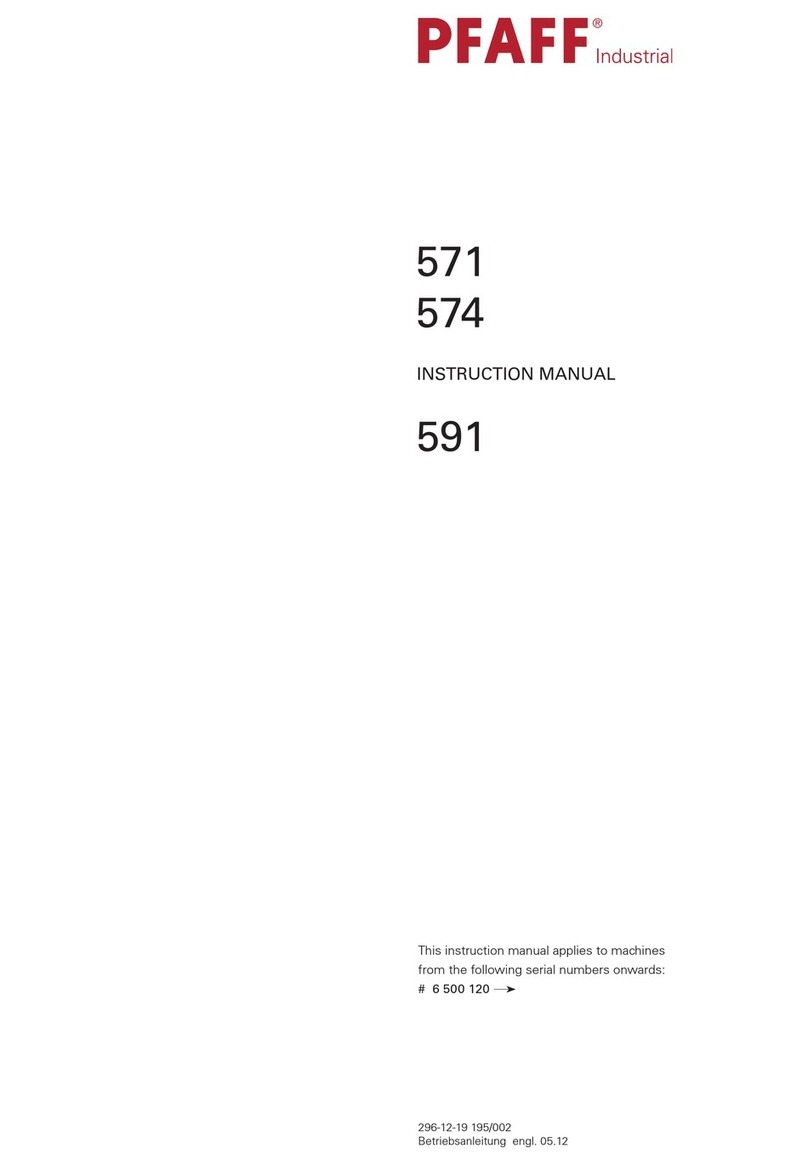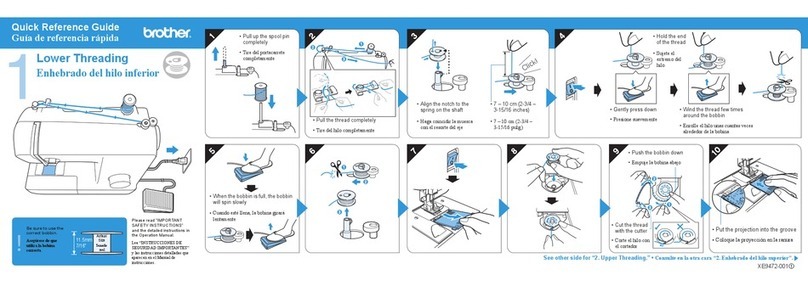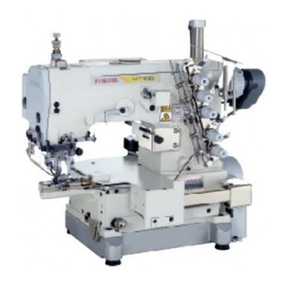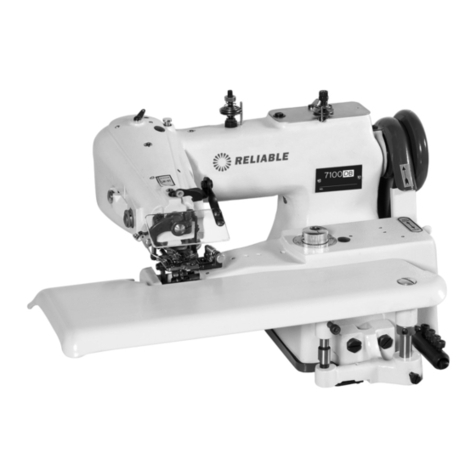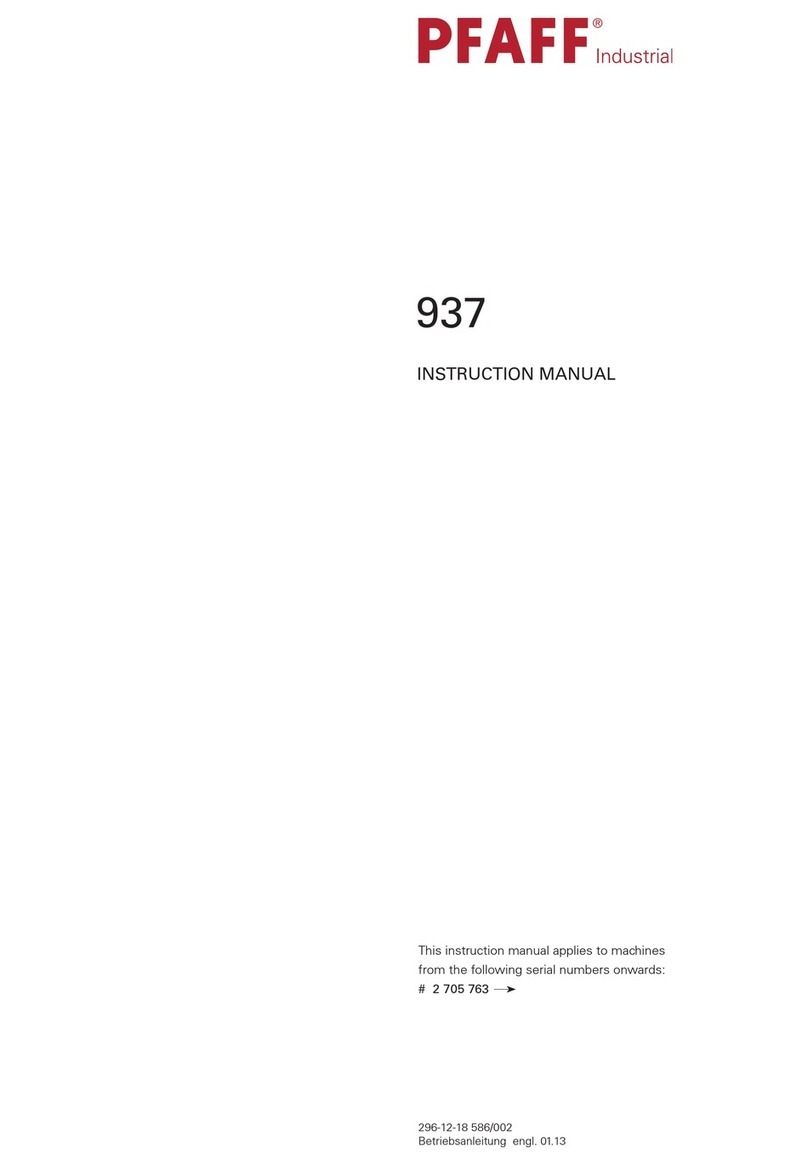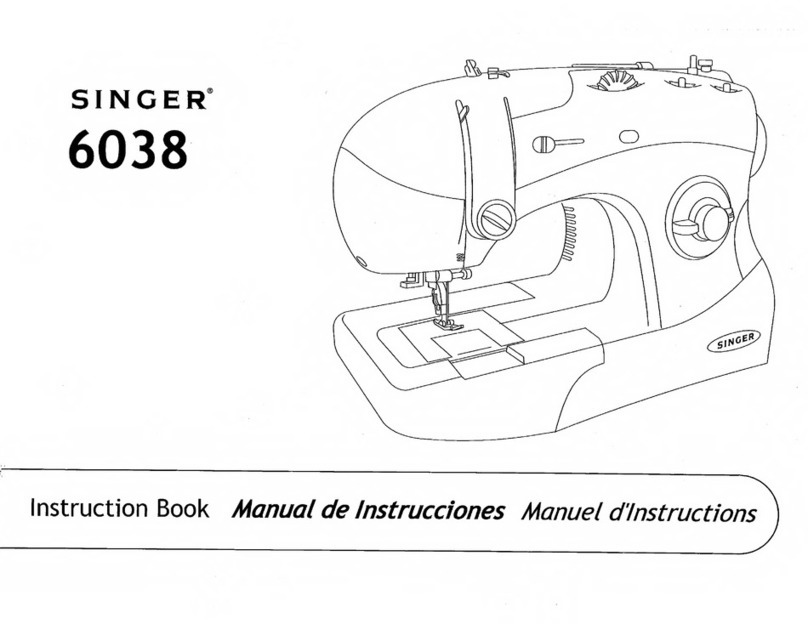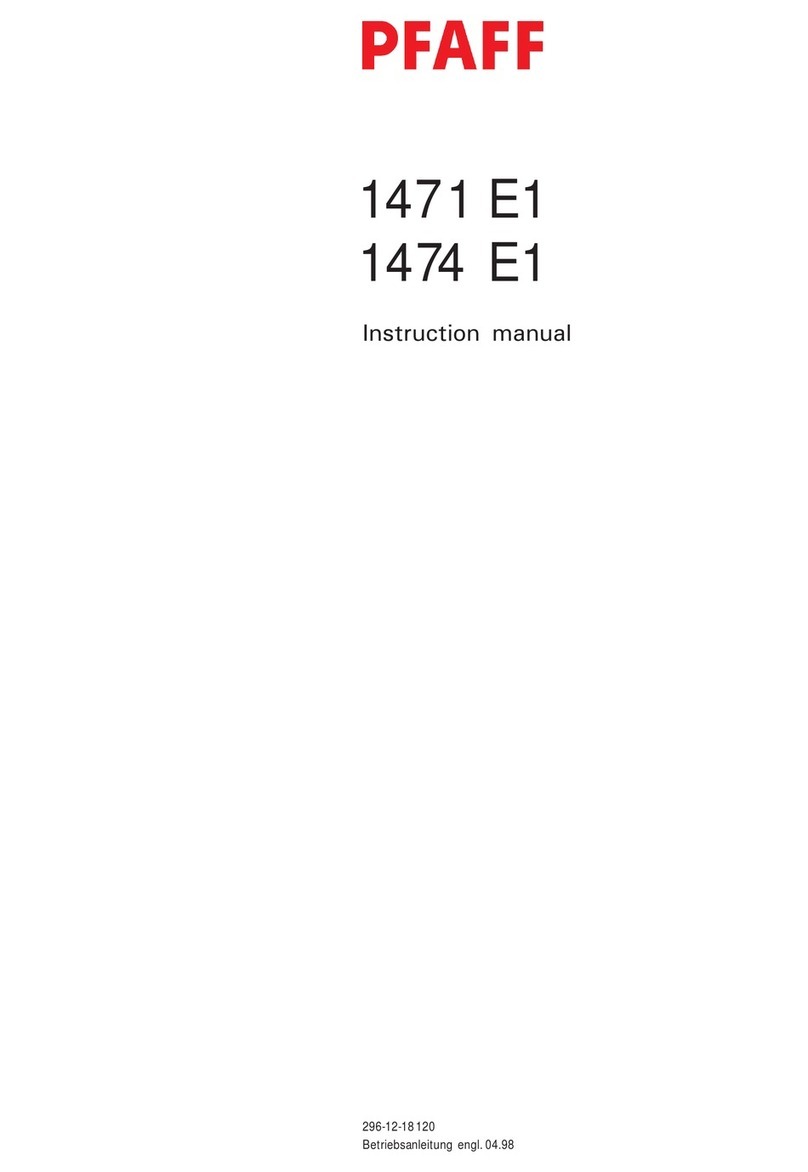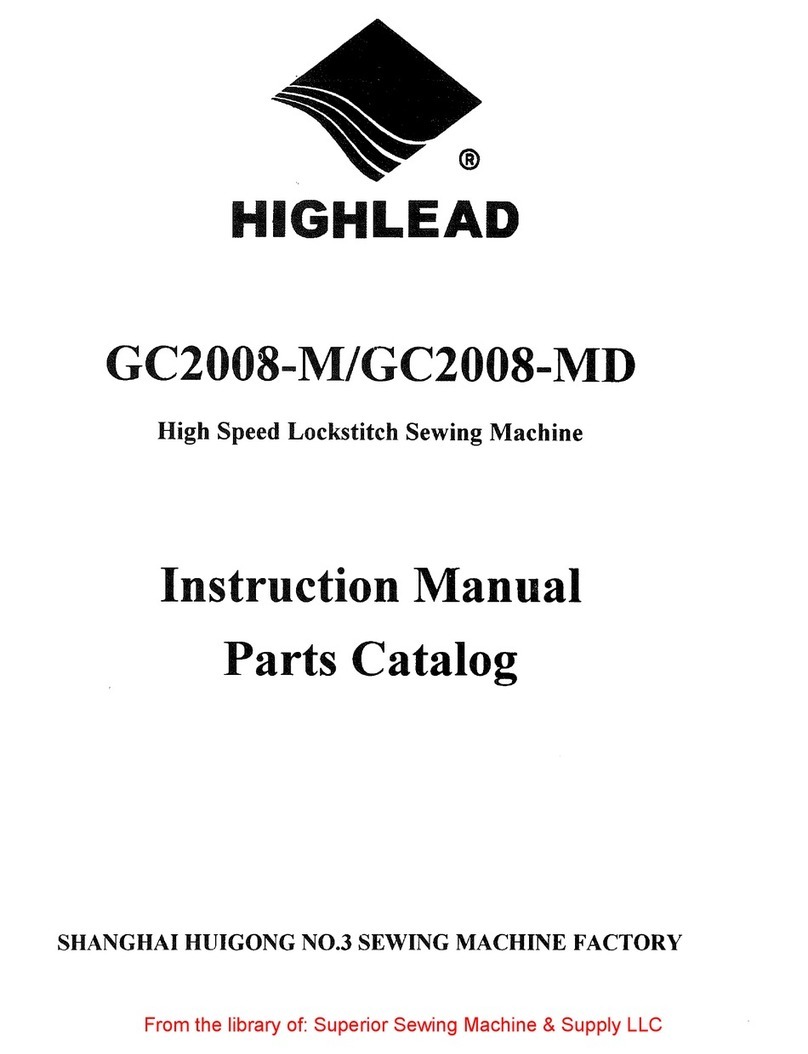
CONTENTS
1. SPECIFICATIONS....................................................................................................... 1
2. STANDARD ADJUSTMENT ....................................................................................... 3
1) Position of the needle entry..........................................................................................................................................3
2) Longitudinal position of the feed dog ...........................................................................................................................3
3) Lateral position of the feed dog ....................................................................................................................................5
4) Height of the feed dog ..................................................................................................................................................5
5) Height of the hook ........................................................................................................................................................7
6) Adjusting the inner hook guide .....................................................................................................................................7
7) Needle-to-hook timing ..................................................................................................................................................9
8) Presser lifter lever ......................................................................................................................................................11
9) Knee lifter ...................................................................................................................................................................11
10) Main shaft-to-hook driving shaft timing ....................................................................................................................13
11) Feed drive eccentric cam timing ..............................................................................................................................13
12) Installing position of the alternate vertical movement amount detecting switch.......................................................15
13) Top feed cam timing.................................................................................................................................................17
14) Feed movement .......................................................................................................................................................17
Ⅰ. Amount of alternate vertical movement of walking foot and presser foot ............................................................17
◯In case of the machine without thread trimmer .............................................................................................17
◯In case of the machine with thread trimmer ..................................................................................................19
Ⅱ. Amount of alternate movement of walking foot and presser foot ........................................................................19
15) Needle sway (Optional selection of LU-1510 and LU-1510-7 only) .........................................................................21
16) Stitch length of normal/reverse feed ........................................................................................................................21
17) Balancer ...................................................................................................................................................................21
18) Position of the reverse feed control lever .................................................................................................................23
19) Safety clutch.............................................................................................................................................................23
20) Lubrication................................................................................................................................................................25
3. STANDARD ADJUSTMENT OF THE ADDITIONAL DEVICES (LU-1510-7)........... 29
(1) Thread trimmer device .................................................................................................. 29
1) Position of the counter knife and the clamp spring ....................................................................................................29
2) Position of the counter knife base ..............................................................................................................................29
3) Vertical position of the moving knife...........................................................................................................................31
4) Adjusting the knife pressure .......................................................................................................................................31
5) Thread trimmer solenoid ............................................................................................................................................33
6) Thread trimmer cam ...................................................................................................................................................33
7) Thread trimmer cam timing ........................................................................................................................................35
8) Connecting the driving arm and the thread trimmer roller arm...................................................................................35
4. INSTALLAION OF THE OPTIONAL PARTS ............................................................ 37
(1) Automatic reverse feed device..................................................................................... 37
1) Removing the side plate.............................................................................................................................................37
2) Removing the reverse feed control lever ...................................................................................................................37
3) Installing the reverse feed link hinge screw ...............................................................................................................37
4) Installing the reverse feed control lever .....................................................................................................................39
5) Installing the automatic reverse feed device ..............................................................................................................39
6) Installing the touch-back switch .................................................................................................................................41
7) Installing the pneumatic components .........................................................................................................................41
(2) Automatic presser foot lifter......................................................................................... 45
1) Assembling the automatic presser foot lifter ..............................................................................................................45
2) Installing the pneumatic device components .............................................................................................................47
5. PORTION TO WHICH LOCKTITE IS APPLIED........................................................ 49
6. SELECTIVE PARTS AND CONSUMABLE PARTS ................................................. 50
7. ENGRAVED MARKER DOTS ON THE HANDWHEEL ............................................ 51
8. PIPING DIAGRAM (LU-1510 AND LU-1510-7) ........................................................ 51
9. TABLE OF TROUBLES IN SEWING AND CORRECTIVE MEASURES ................. 52
10. TRABLE OF TROUBLES IN THREAD TRIMMING AND
CORRECTIVE MAESURES .................................................................................... 56
